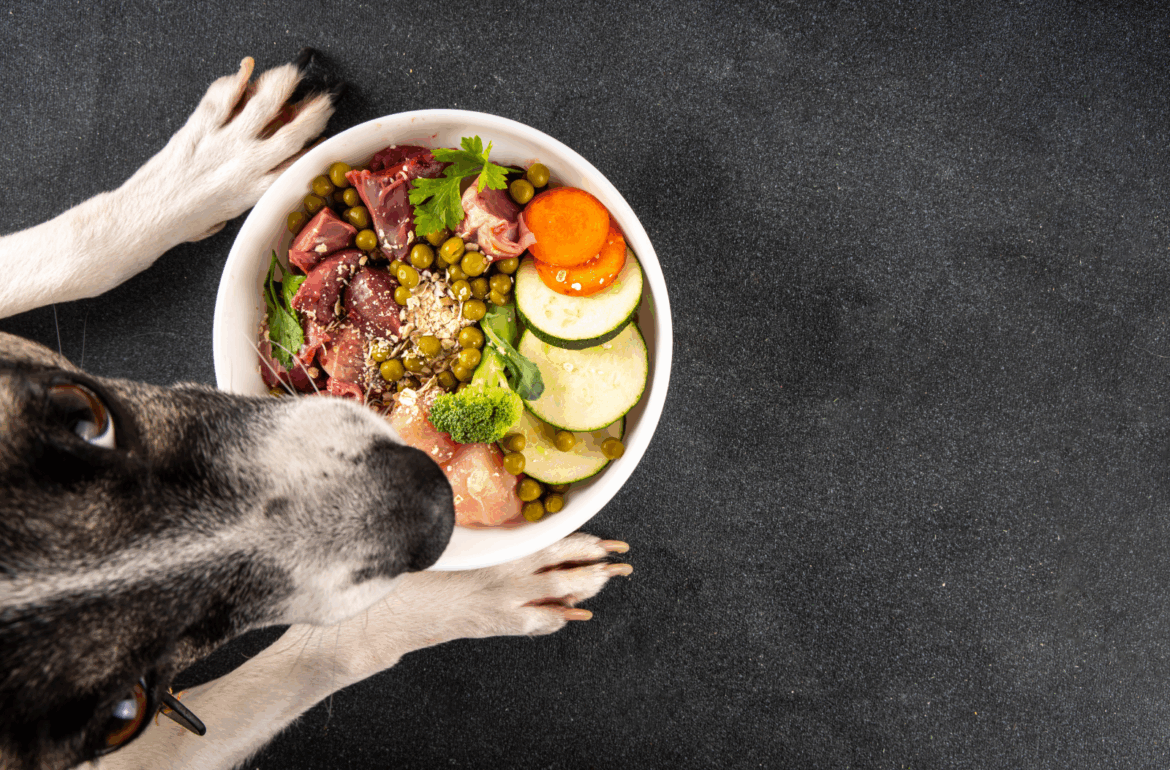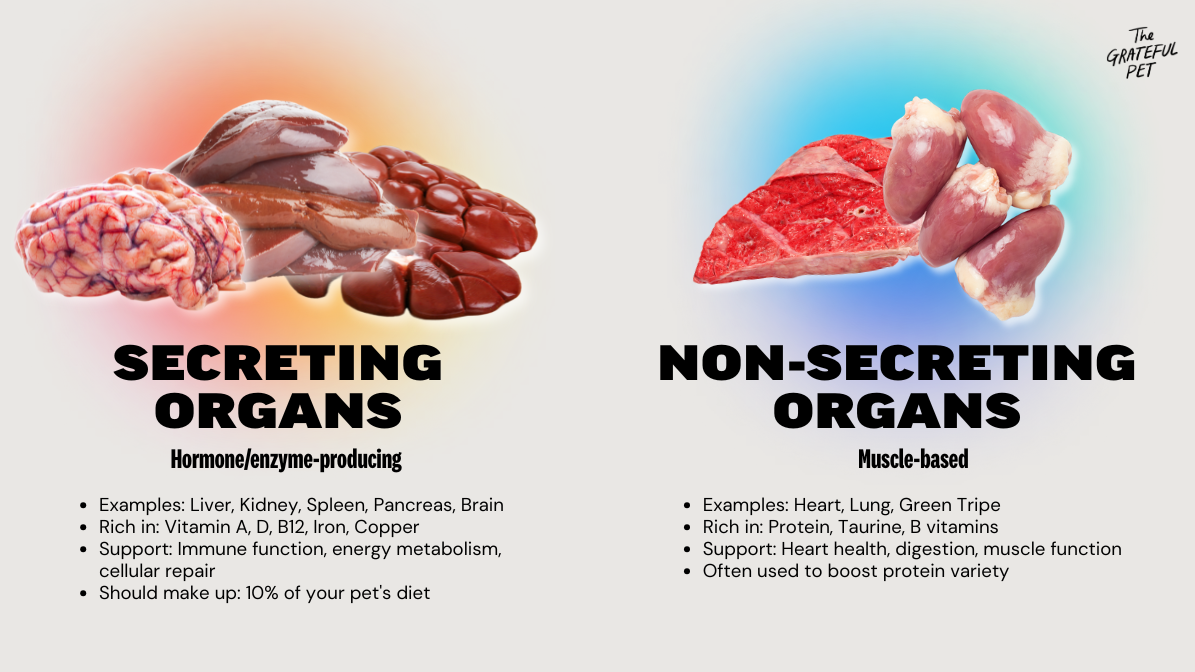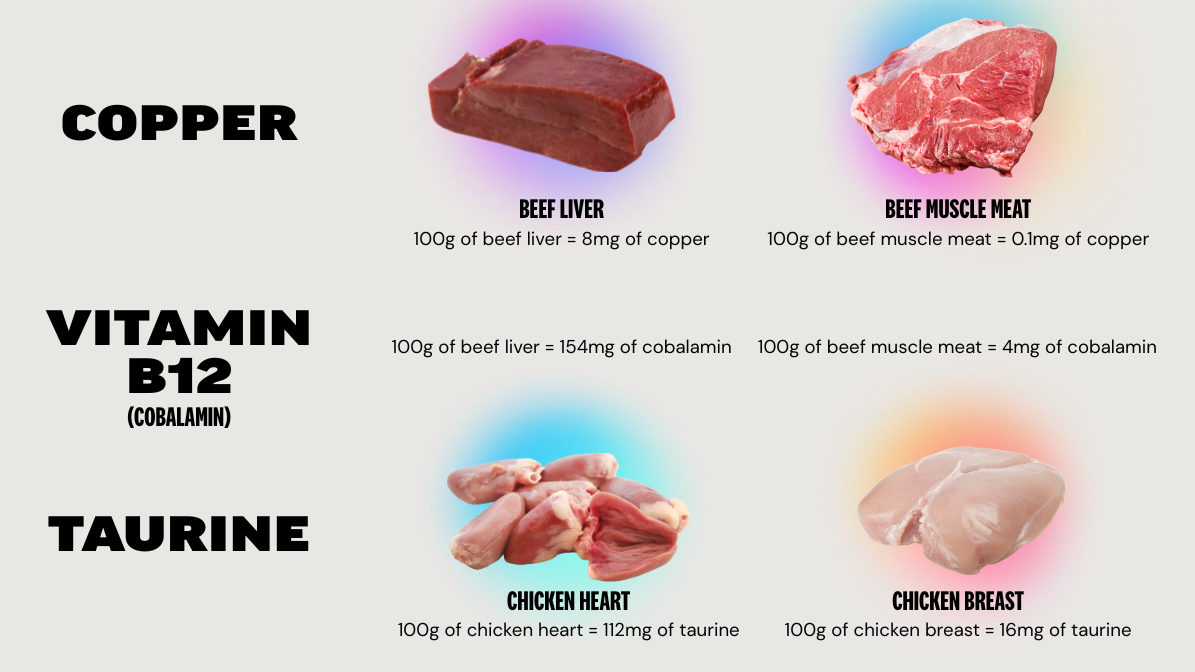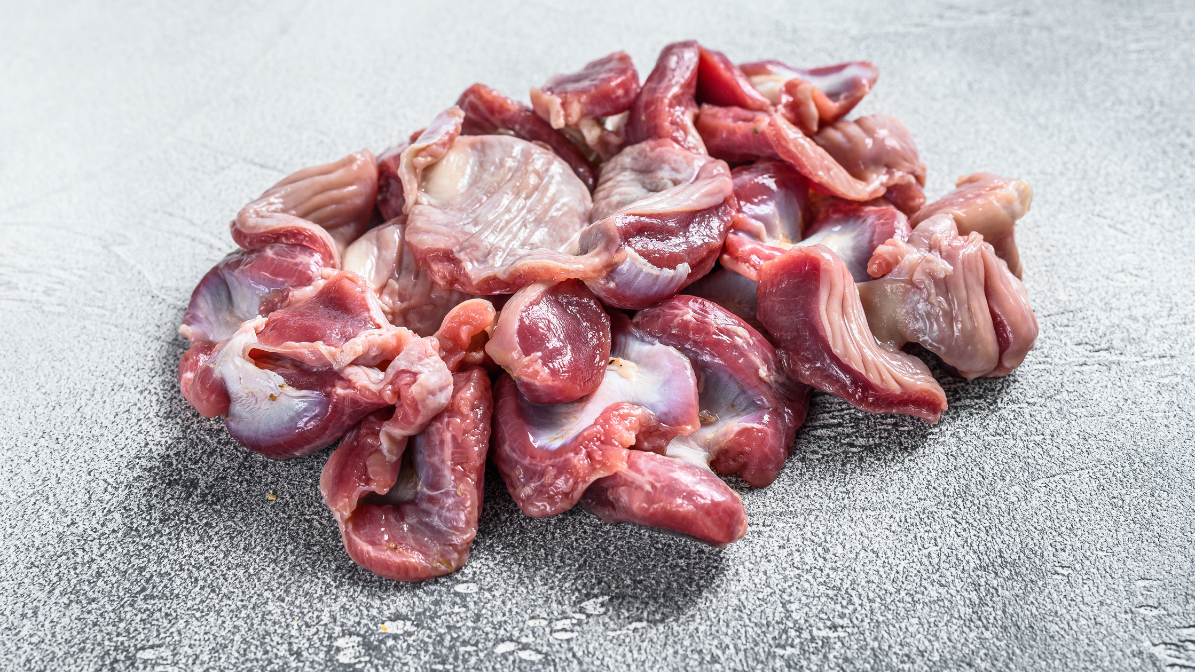Why Organ Meats Matter More Than You Think

Organ meats, or offal, often get a bad rap as cheap or undesirable cuts – but for dogs and cats, they are nutritional gold. These foods (the heart, liver, kidneys and other internal organs of animals) pack far more vitamins, minerals and other nutrients than muscle meat alone. In a balanced pet diet they help fill gaps that muscle meat can’t cover. This post will explain exactly what we mean by “organ meats,” why our pets need them, and how to add them safely to your pet’s meals.
What Is Organ Meat?
Organ meats are simply the internal organs of animals (often called “offal”) used for food. Common examples in pet diets include liver, kidney, heart, spleen, lung, tripe (stomach lining) and sometimes pancreas or brain. In The Grateful Pet’s grass‑fed beef fresh food for dogs, it is made up of at least 70% meat and organs– including beef heart, liver, lung and spleen.
Within this overall term of ‘organ meats’, there are two distinct groups: secreting organs and non‑secreting organs.

- Secreting organs produce enzymes or hormones and are extremely nutrient-dense. These include the liver, kidneys, spleen, pancreas and brain. For instance, the liver is rich in vitamin A and D, vitamin B12, iron, copper and other micronutrients. Kidneys and spleen similarly supply B vitamins and iron.
- Non-secreting organs do not produce hormones or enzymes but are still rich in nutrients. These include the heart, lungs and tripe. Heart is mostly muscle, so it’s high in protein, B vitamins and amino acids like taurine (crucial for cats). Lungs and tripe also offer protein and unique benefits. A common pet food ingredient is green tripe–the untreated stomach lining of ruminants, which contains healthy digestive enzymes and probiotics to support gut health.
A nutritious raw or fresh diet will include both secreting and non-secreting organs so your cat or dog gets a balanced array of nutrients. This approach mimics what nature intended and provides a spectrum of essential vitamins and minerals for a beneficial diet that is most suited for the nutritional requirements of your pet.
Why Do Pets Need Organ Meat in Their Diets?
Compared to muscle meat, organs are often packed with higher levels of vitamins, minerals and other nutrients. These nutrients support everything from immune function and metabolism to vision, coat health and cognitive function. In fact, feeding your pet a diet that mimics the whole-prey model (meat and organs) has been linked to improved health and vitality [1].
Organ meats help prevent deficiencies that can arise on a muscle‑only diet. Without them, pets can suffer from real health problems. For example, cats cannot form taurine on their own. Taurine is an amino acid found abundant in heart meat. If they do not get enough taurine, deficiency can lead to heart failure and irreversible vision loss [2].
Another key example is vitamin D. Dogs and cats cannot synthesize vitamin D3 in their skin from sunlight the way humans do. This means they must get D3 from their diet. Organ meats, especially liver and brain naturally contain vitamin D, helping to build strong bones and support immunity. A lack of dietary vitamin D can lead to bone weakness and immune problems, so including organ sources helps to supply these nutrients [3].
Nutrient Comparisons in Organ Meats vs Muscle Meat

- Copper: 100g of cooked beef liver contains about 8 mg of copper, whereas 100g of beef muscle meat has less than 0.1 mg
Copper is vital for iron absorption, immune function and connective tissues; without organ meat, pets easily fall short of their copper needs.
- Taurine: 100g of raw chicken heart provides roughly 112 mg of taurine, compared to only ~16 mg in 100g of chicken breast
Taurine is important for your pet’s heart, brain, and reproductive health. It is also necessary for vision and bile acid production, which aids in food digestion [4].
- Vitamin B12 (Cobalamin): 100g beef liver provides 154mg per 100g, compared to only 4mg in beef muscle meat [5].
Without organs, diets can be deficient in B12, leading to anemia, neurological issues and fatigue.
By supplying these dense nutrients, organ meats fill in gaps left by muscle meat or plant ingredients. In practice, this means pets on organ-inclusive diets often have shinier coats, better digestion and more energy.
Adding Organ Meats to Your Pet’s Diet
Incorporating organ meats into meals is straightforward once you know how much and how often. Nutrition guidelines generally recommend that organ meats make up about 10-25% of a pet’s total diet. A common ratio for raw-feeding is roughly 10% secreting organs (like liver and kidneys) and another 5% non-secreting organs (like heart or tripe).
Always serve organs fresh or gently cooked. High heat or long cooking times can destroy sensitive nutrients and enzymes. Serving organ meats raw is common in raw-feeding diets, but gently cooking at 80°c can still preserve the vitamins while ensuring safety. Fortunately, you don’t have to prepare organs entirely from scratch. At The Grateful Pet we offer balanced dog and cat recipes made with human-grade ingredients, featuring lean muscle and organ meats, plus whole fruits, vegetables (dog diets only) and superfoods, all meeting AAFCO nutritional standards.
By choosing our fresh food diet, you’ll be able to incorporate high-quality organ meats in every meal for your pet without the fuss. These diets can be served frozen or gently warmed and provide a convenient way to give pets the full spectrum of nutrients they need. Whether you buy complete and balanced fresh-food meals or mix them into your homemade meals, adding quality organ meats will help your pet thrive.
References
[1] Nutritional evaluation of raw meat and whole prey diets for domestic and exotic cats–Kerr & Katherine K., June 2012 https://www.ideals.illinois.edu/items/32326
[2] Taurine Deficiency in Cats–Michael Kearley, Dec 2023 https://www.petmd.com/cat/conditions/cardiovascular/taurine-deficiency-cats
[3] The Role of Vitamin D in Small Animal Bone Metabolism–Metabolites, Dec 2020 https://www.mdpi.com/2218-1989/10/12/496
[4] Taurine Deficiency in Cats–Michael Kearley, Dec 2023 https://www.petmd.com/cat/conditions/cardiovascular/taurine-deficiency-cats
[5] Application of the SPE reversed phase HPLC/MS technique to determine vitamin B12 bio-active forms in beef– Science Direct, Feb 2012 https://www.sciencedirect.com/science/article/abs/pii/S030917401200068X#:~:text=Vitamin%20B12%20concentrations%20in%20various,cyanocobalamin%20(CNCbl%2C%201.7%25)




